Description
Bring Good Fortune and Happiness Into your Home
Pachira Aquatica, also known as the Money Tree or Guiana Chestnut, is a popular houseplant renowned for its alleged ability to bring prosperity and good luck. Native to the tropical wetlands of Central and South America, it thrives in conditions that mimic its original habitat. It’s a low-maintenance plant that even beginners can manage, as long as they adhere to certain care guidelines.
Caring for your Money Tree
Pachira Aquatica is a resilient and adaptable plant that can flourish indoors with the right care. The most important considerations are to avoid overwatering, provide adequate light, and maintain a warm, stable environment. With these in mind, your Money Tree can grow robust and healthy, gracing your home with its lush, tropical beauty.
Light
Pachira Aquatica prefers bright but indirect sunlight. Although it can tolerate low-light conditions, the plant may become leggy as it stretches towards the light source. Therefore, for an ideal balance, place it near a north or east-facing window.
The Money Tree appreciates a warm environment with temperatures ranging from 65 to 80 degrees Fahrenheit. It’s sensitive to cold drafts and sudden temperature drops, so ensure that it’s not placed near doors or windows that frequently open in cold weather. It’s also crucial to keep it away from air conditioners and heaters to prevent its leaves from drying out.
Water
The watering schedule for Pachira Aquatica is best dictated by the soil’s moisture level. This plant is semi-aquatic and can withstand periods of flooding in its natural habitat. However, in the home setting, it’s best to allow the soil to dry out between waterings to prevent root rot. The plant’s water needs vary depending on the season. During warmer months, it may require watering once a week, while in cooler months, watering should be reduced to once every two weeks or when the top two inches of soil are dry. Use a moisture meter or your finger to gauge the soil’s dampness.
When watering, it’s essential to use a well-draining potting mix and a pot with adequate drainage holes to prevent water from standing at the roots. Water thoroughly until it runs out from the drainage holes, then let the pot drain completely before placing it back on its saucer.
Pachira Aquatica thrives in high humidity, but it can tolerate the average humidity levels found in most homes. If you live in a particularly dry climate, you might consider using a humidifier near the plant or placing it on a tray filled with pebbles and a little water. The evaporating water will increase the humidity around the plant.
Misting the leaves with lukewarm water can also help increase humidity and keep the foliage dust-free. However, mist only during the morning to ensure the leaves dry out completely before nightfall, reducing the risk of fungal infections.
Fertilizer
Feed your Pachira Aquatica with a balanced, water-soluble houseplant fertilizer during the growing season, from spring through early fall. Fertilize once a month, following the package instructions for dosage. Avoid over-fertilizing as it can cause salt build-up in the soil, which may damage the roots.
Pruning
Young Pachira Aquatica plants can be pruned to control their size and shape. Pruning also encourages bushier growth, making your plant more visually appealing. Prune in early spring before new growth begins.
For aesthetic purposes, Money Trees are often sold with their trunks braided. If you wish to maintain this look as your plant grows, you’ll need to continue the braiding process. Do this while the stems are young and flexible, taking care not to damage the bark.
Repotting
The Money Tree is a slow-growing plant and generally needs to be repotted every two to three years. The best time to repot is during spring. Choose a pot that is one or two sizes larger than the current one to allow for growth. Make sure the new pot has good drainage.
When repotting, be gentle with the root ball. Use fresh, well-draining potting soil, and place the plant at the same depth it was growing before. After repotting, water the plant thoroughly and place it in a shaded area for a few days to help it adjust to the change.

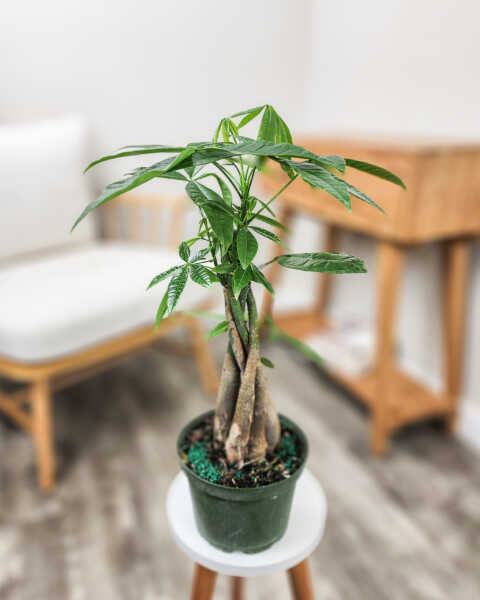
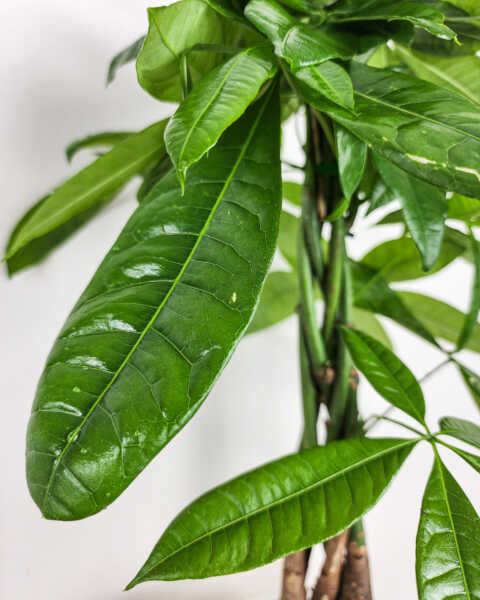
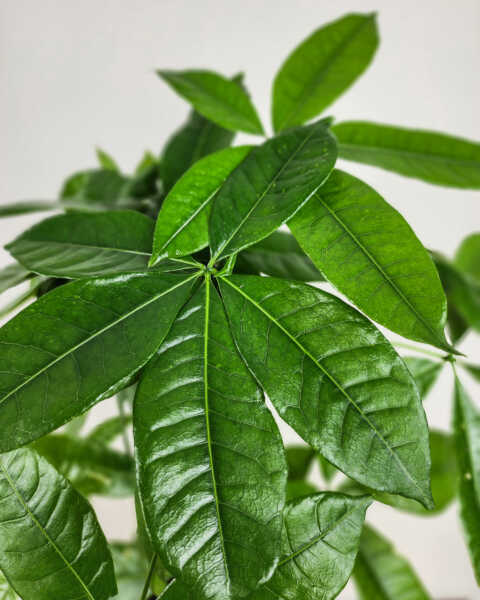


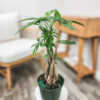
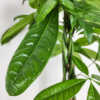
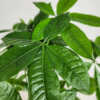
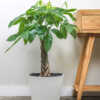
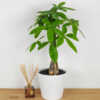







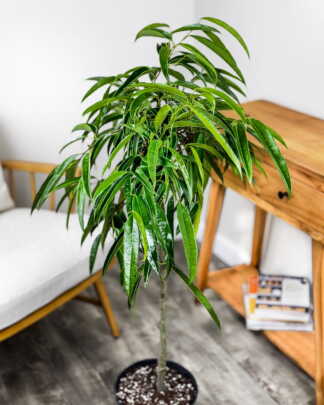
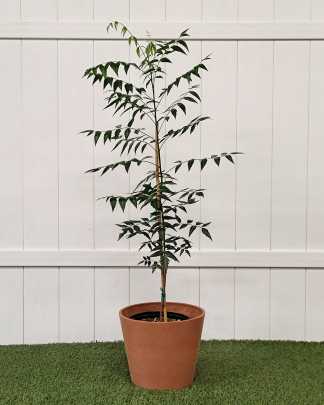
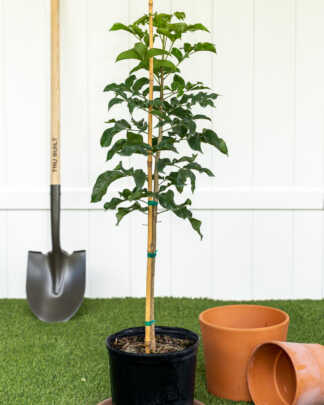
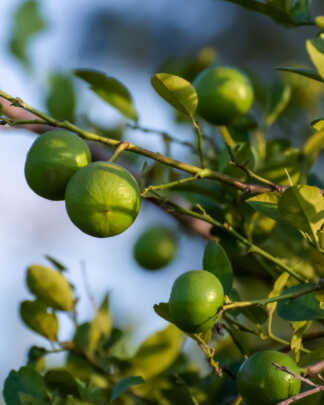







Catherine (verified owner) –
Jacqueline R Scott (verified owner) –
I think the money tree plant carried the bulk of damage because of the damage to box and damaged dowel. I think it to will recover nicely.
Ann Rambasek (verified owner) –
Kaz (verified owner) –
I purchased 2 extra large Braided Money Trees. LOVE THEM!
Michael P. (verified owner) –
Chris Holt (verified owner) –
Varun (verified owner) –
Alice C. (verified owner) –
An impressive size for the $, arrived healthy and intact!
Linda J. (verified owner) –
All your plants are gorgeous, well packed and on the spot for shipping.
Meredith (verified owner) –
Anonymous (verified owner) –
Lovely plant and well packaged.
Anonymous (verified owner) –
Very happy plant when arrived:)
Julia B. (verified owner) –
Happy and healthy love this looks perfect in the corner by my orange chair
Anonymous (verified owner) –
Anonymous (verified owner) –
A couple of minor concerns but overall I am pleased with my plant.
Airenne (verified owner) –
Beautiful plant! It arrived quickly, in amazing shape! The whole experience was perfect, cant wait to buy from here again!
Megan (verified owner) –
Beautiful, healthy plant! Love the convenience of plant vine. Second time ordering – thank you!
Anabel (verified owner) –
Daniela H. (verified owner) –
Nicole (verified owner) –
I ordered the largest money tree plant available, and due to Covid, it arrived a late. That was at the point when transport was inundated with shipments, so not a big deal. The tree had a few yellow leaves and shed a bit in the first week.
However, since placing it in its home in the sun, this baby is thriving!!! It is growing lovely new leaves weekly and has grown another 5-6 Inches since it arrived in June. It is exactly what we hoped for! Thank you.
John K. (verified owner) –
Andrea (verified owner) –
Looked great when I received it!
Alyson (verified owner) –
Sara F. (verified owner) –
Donna Dellavalle (verified owner) –
Absolutely precious- I love my pachira* aquatica* money plant. Arrived healthy and intact During shipping and continues to flourish 🌿💚
Anonymous (verified owner) –
Arrived with several yellow leaves
Heather B. (verified owner) –
Most of the leaves are bright, vibrant green and there are many new growth leaves which seems a sign of good health. Overall it’s very pleasing to look at and I’m very happy with the condition that it arrived in.
Joyce (verified owner) –
Pamela –
Thanks, one more question how do they ship concerned if they will be in a refrigerated truck?
Pamela –
How tall is the plant shipping?